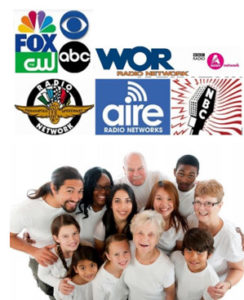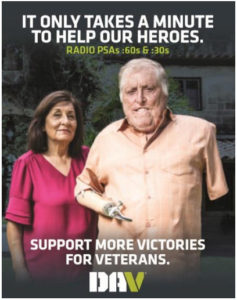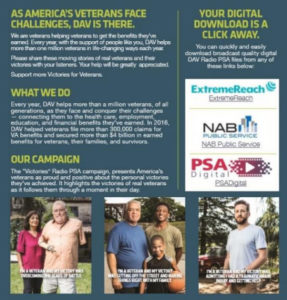“The Broadcast Age began about 75 years ago when KDKA, America’s first commercial
radio station signed on in Pittsburgh, PA.,” says Rick Ducey, Senior V.P. for Research
at the National Association of Broadcasters. “This created a whole new experience for
the audience, which began relating to people on radio as trusted friends,” he observes.
According to the Radio Advertising Bureau, Americans spend 22 percent of their time
listening to the radio, listening from 14 hours to over 21 hours every week, depending
upon their age. Its portability, coupled with its ability to segment listeners by their
program tastes, has contributed to its long-standing popularity.
Generally, any non-profit organization qualifies for broadcast public service airtime,
including associations, local, state, and federal government agencies, think tanks,
health organizations, unions, foundations and many others.
In short, competition for PSA time is intense and getting tougher each year. Besides
competition, there is a need to think about appropriate formats for stations on your list,
program formats and how materials will be packaged.
On the plus side, a radio PSA campaign can be produced and distributed with a modest
budget, yet yield air time valued in the high six figures.
The following suggestions will help you get the maximum return on your next radio PSA
campaign:
- Include Networks.
There are dozens of radio networks ranging from national public radio to satellite music network. You should know which ones accept PSAs, the materials they require and the contact person to deal with at each one. - Develop a Strategic Distribution Plan.
With over 11,000 radio stations in the country, which ones should you target?Radio can help you segment target audiences in a variety of ways including age, racial composition, geography, and lifestyle. However, unless you are mailing to every station in the country, you need to think about who your primary and secondary target audiences are, where they live, and what stations reach them most efficiently. - Know What Stations Want.
Radio stations use both three types of materials – live announcer scripts, recorded CDs, and some will download digital files. If you know what materials stations prefer and send them what they want, you stand a better chance of getting airtime.  Provide Programming Options.
Provide Programming Options.
Even if you send stations a CD package, you should always give stations live announcer copy as well. Some stations – particularly those in large markets – will use it because it allows them to brand your message by involving their on-air announcers. Also, include PSAs in a variety of different lengths ranging from 15 seconds to a full minute, which allows stations a variety of options. To give even more flexibility, think about offering several different musical formats, i.e. country, rock, easy etc. That way, a program director or DJ can produce their own PSAs custom tailored to their particular format.- Use Instrusive Packaging.
Public service directors are important gate-keepers whom you must positively influence to get your materials on the air. To generate maximum impact, create an attractive PSA package for your campaign. If your packaging is dull and unimaginative, they may not even take the time to look inside, let alone play your PSAs. Your package should be in full-color and provide compelling graphics on the external packaging. - Provide Digital Files.
 While TV stations do not accept anything but digital files, radio is still in a state of transition, so it is better to provide both.As we do for TV, we provide digital radio files on three different platforms – our own PSA Digital download site, the download site provided by the National Association of Broadcasters and Extreme Reach, the premier digital download platform in the U.S. We use blast emails and hard copy direct mail to let stations know the URL for downloading PSAs.
While TV stations do not accept anything but digital files, radio is still in a state of transition, so it is better to provide both.As we do for TV, we provide digital radio files on three different platforms – our own PSA Digital download site, the download site provided by the National Association of Broadcasters and Extreme Reach, the premier digital download platform in the U.S. We use blast emails and hard copy direct mail to let stations know the URL for downloading PSAs. - Evaluate Your Campaign.
We can’t stress how important it is to know where and when your public service announcements are airing and who they are reaching. You should know where they are not playing and why. If you don’t know, your boss will probably want to know:- What are we getting for our money – what was our ROI (Return on Investment)?
- In which of our primary markets are we getting airtime and where are our weaknesses?
- What kinds of audiences are we reaching with our message?
- How does radio compare to TV and/or other kinds of media options?
- How has it helped us educate, inform, change behavior, generate requests, etc.?
When it comes to analyzing results, management usually reacts more favorably to external evaluation because they feel it is more credible. Often they regard reports prepared by internal staff as a case of the fox guarding the hen house.
- Consider “Contracting Out”
Even after the challenging job of getting your PSA materials recorded, there is still a lot of work to do. You’ve got to: prepare a budget, compile a mailing list, generate labels, reproduce audio CDs and scripts, print packaging elements and supervise labeling and mailing. You may be able to reduce costs and use your staff more productively by selecting a full-service vendor to handle these important but tedious details. - Visit Stations if Possible.
If you have field offices, chapters, affiliates or a public affairs network at the local level, consider hand delivering radio PSAs. Radio stations are truly local in nature and their entire mission is to support community causes. They also have less demands on their time than TV stations, so if possible visit them in person which gives you a chance to sell your cause person-to-person. - Show Appreciation
For those stations which use your PSAs, let them know you appreciate their support. If they gave you a lot of support, think about a plaque or framed certificate signed by your senior management. Letters, notes, cards or anything you send is better than nothing, and they will remember it the next time you come to them asking for free time.





Leave A Comment